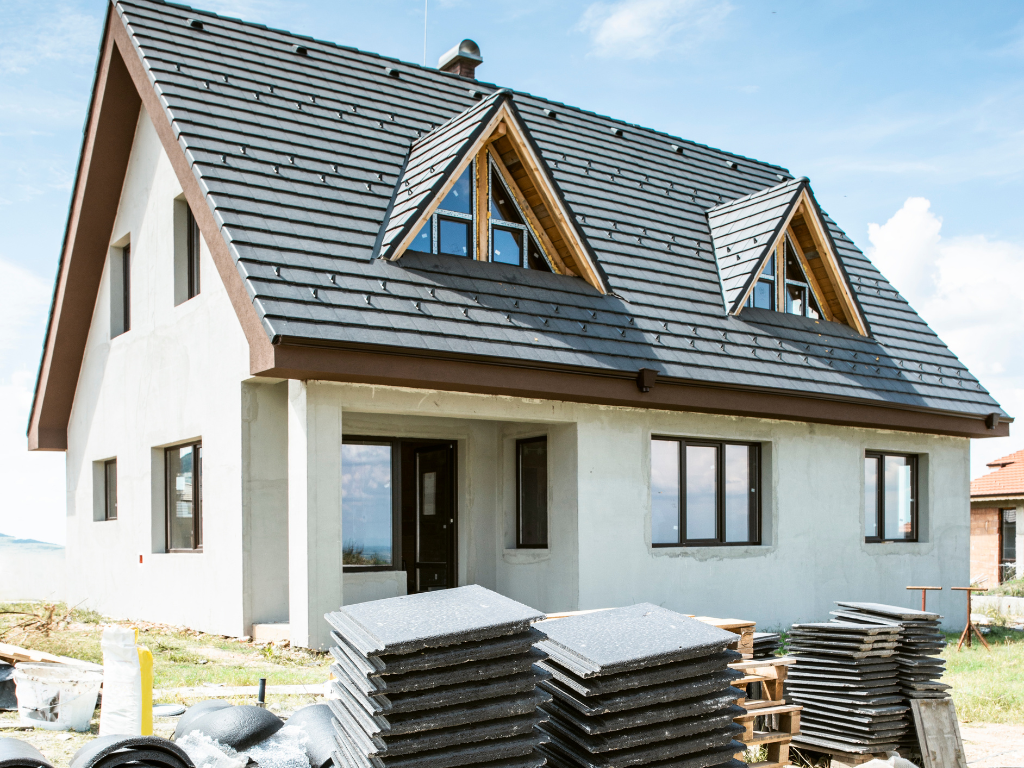Maintaining the integrity and functionality of roof tiles is vital for the overall safety and longevity of any building. Roof tiles, being one of the most critical components of a building’s structure, require regular inspection and maintenance to prevent potential damage. Understanding when and how to conduct roof repairs, or even considering a complete roof tile replacement, is essential in ensuring your roof remains in optimal condition. This guide aims to provide homeowners and property managers with comprehensive insights into roof tile maintenance, covering aspects from basic repairs to full-scale roof replacement.
Evaluating Your Roof’s Condition
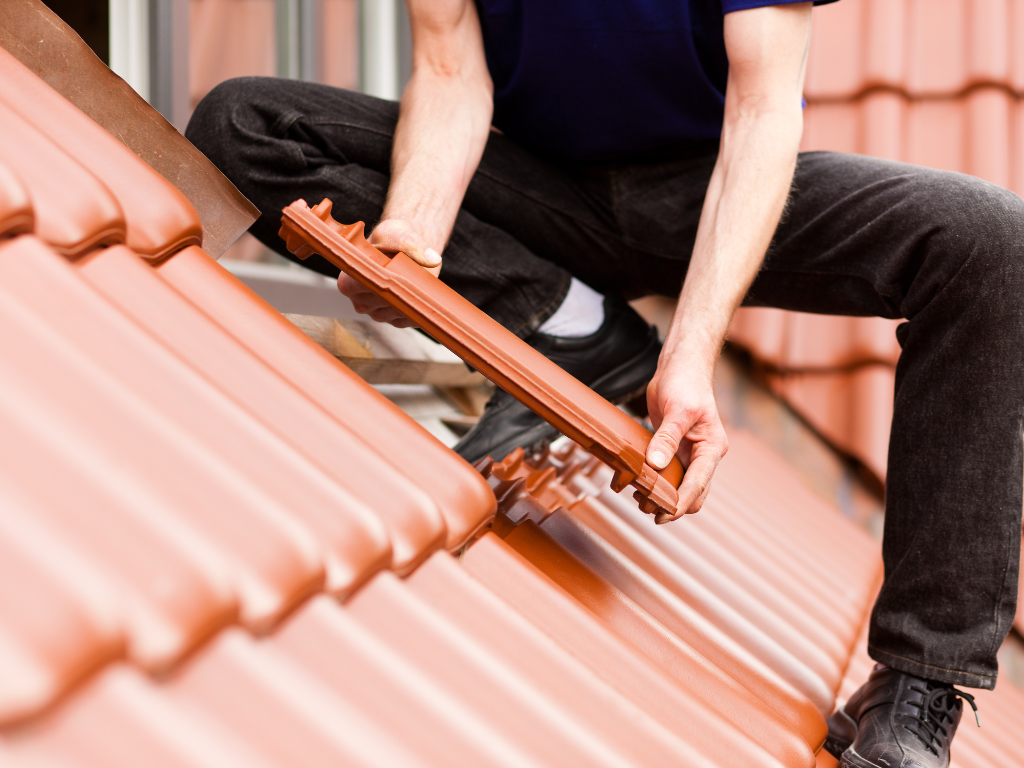
How to Assess the State of Your Roof Tiles
Assessing the condition of your roof tiles involves a visual inspection to identify any signs of wear or damage. Look for cracked, broken, or missing tiles, as these are clear indicators that repairs or replacement may be necessary. It’s also important to check for moss or algae growth, as these can cause underlying damage over time. Using binoculars, inspect the roof from the ground, or consider hiring a professional to conduct a thorough inspection if you suspect deeper issues.
Identifying Warning Signs for Immediate Roof Repairs or Replacement
Certain warning signs demand immediate attention to prevent further damage. These include:
- Water stains or leaks in the attic or ceiling, indicating possible cracks or breaks in roof tiles.
- Noticeable sagging or structural deformation of the roof.
- Excessive granule loss from tiles, which can compromise their protective function.
- Recurrent problems despite frequent minor repairs, suggesting the need for a more comprehensive approach like roof replacement.
Understanding the Basics of Roof Repairs
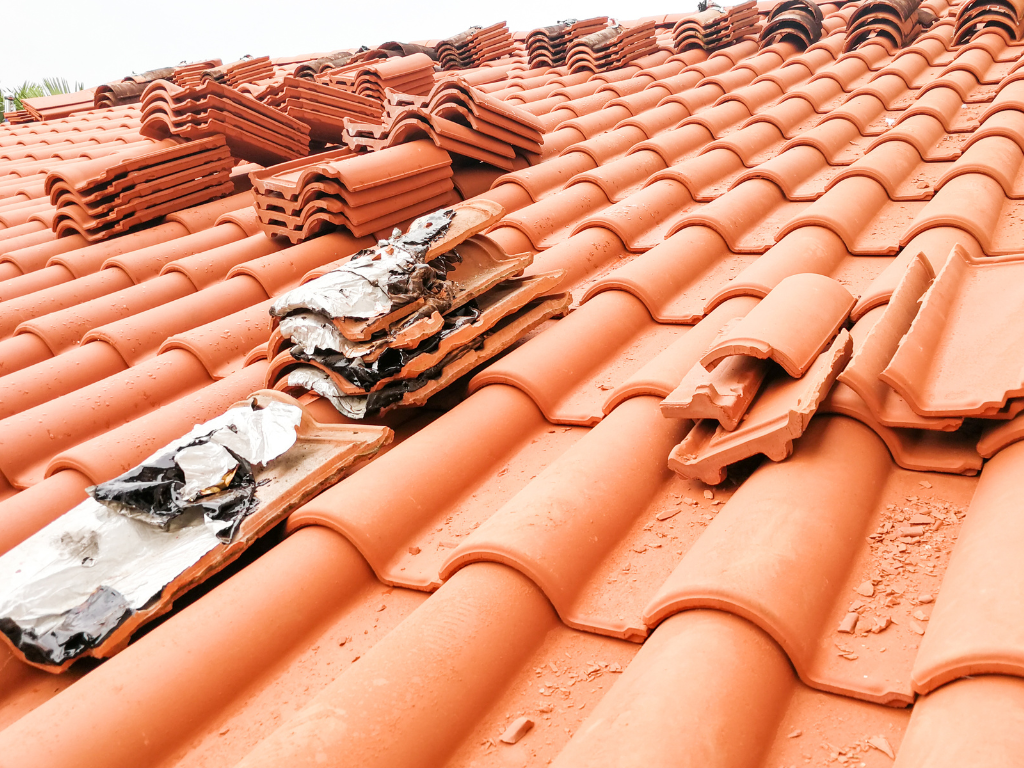
Different Types of Roof Repairs and When They Are Needed
Roof repairs can range from minor fixes to major restorations. Minor repairs often involve replacing or repositioning individual roof tiles, sealing minor cracks, or clearing blockages from gutters. Major repairs might include fixing underlying structural damage, addressing widespread tile deterioration, or solving persistent leakage problems.
Techniques for Minor Roof Tile Repairs
For minor roof tile repairs:
- Replace cracked or broken tiles with new ones that match the existing roof.
- Apply roofing sealant to small cracks or holes for a temporary fix.
- Ensure proper alignment of tiles to prevent water seepage.
Deciding Between Roof Repairs and Complete Roof Replacement
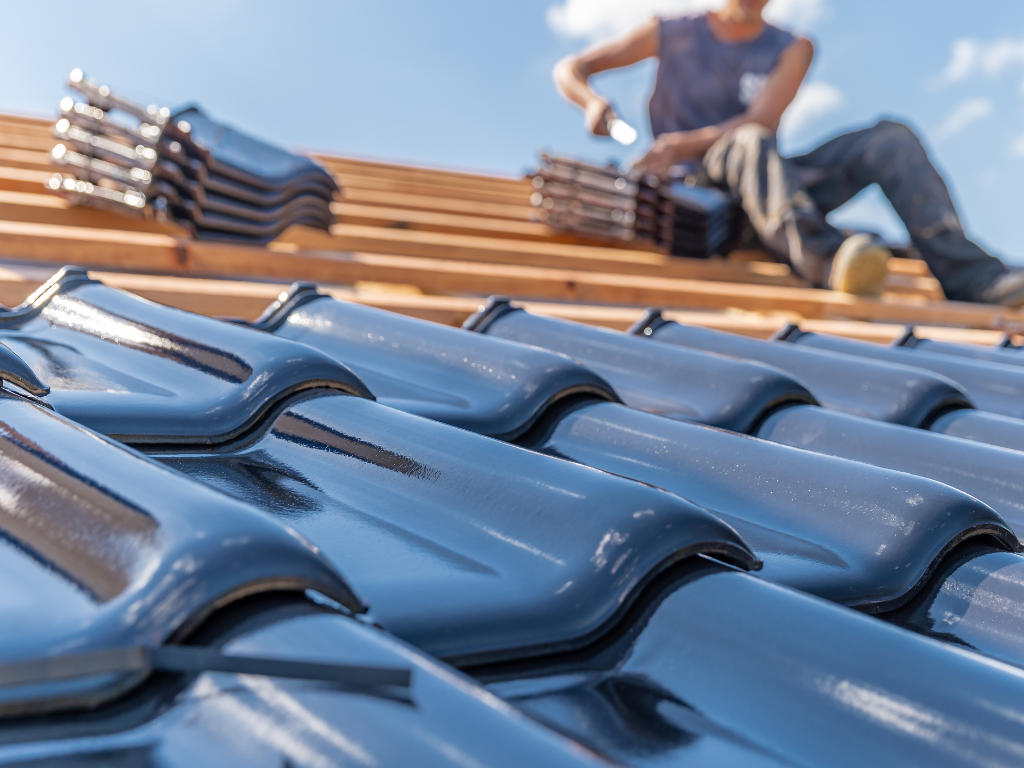
Factors to Consider When Choosing Between Repair and Replacement
Deciding between roof repairs and a complete roof replacement involves several factors:
- Age of the roof: Older roofs might be better candidates for replacement.
- Extent of damage: Widespread damage often necessitates a full replacement.
- Cost implications: While repairs are less costly upfront, frequent repairs can add up, making replacement a more cost-effective long-term solution.
Assessing the Long-Term Benefits of Roof Replacement vs. Short-Term Repairs
Roof replacement, though initially more expensive, can offer long-term benefits:
- Provides a solution to persistent roofing issues.
- Increases property value and enhances aesthetic appeal.
- Incorporates newer, more durable materials, leading to reduced maintenance costs.
Step-by-Step Process for Roof Tile Replacement
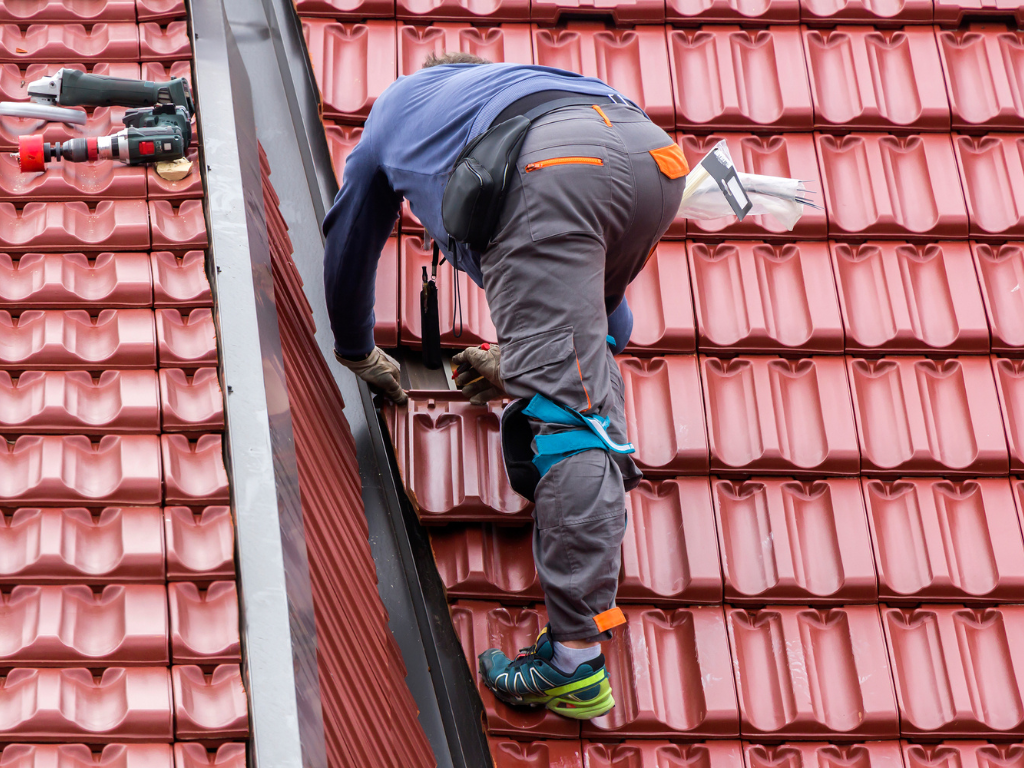
Key Steps Involved in Roof Tile Replacement
Replacing roof tiles is a complex process that requires precision and care. The key steps involved include:
- Roof Assessment: Conduct a thorough inspection to determine the extent of tile replacement needed.
- Removing Old Tiles: Carefully remove the damaged or old tiles without affecting the intact ones.
- Preparing the Roof Surface: Clean the roof surface, ensuring it’s free from debris and ready for new tiles.
- Installing New Tiles: Place the new tiles, ensuring they are aligned correctly and securely fastened.
- Sealing and Finishing: Apply sealant where necessary and check for any gaps or misalignments.
Challenges and Safety Measures to Consider During Replacement
Safety is paramount during roof tile replacement. Key challenges and safety measures include:
- Height Risks: Always use a secure ladder or scaffolding, and consider harness systems for steep roofs.
- Handling Materials: Use proper techniques to lift and transport tiles to avoid injuries.
- Weather Conditions: Avoid working in adverse weather conditions, especially high winds or rain.
Material Selection for Roof Tile Replacement
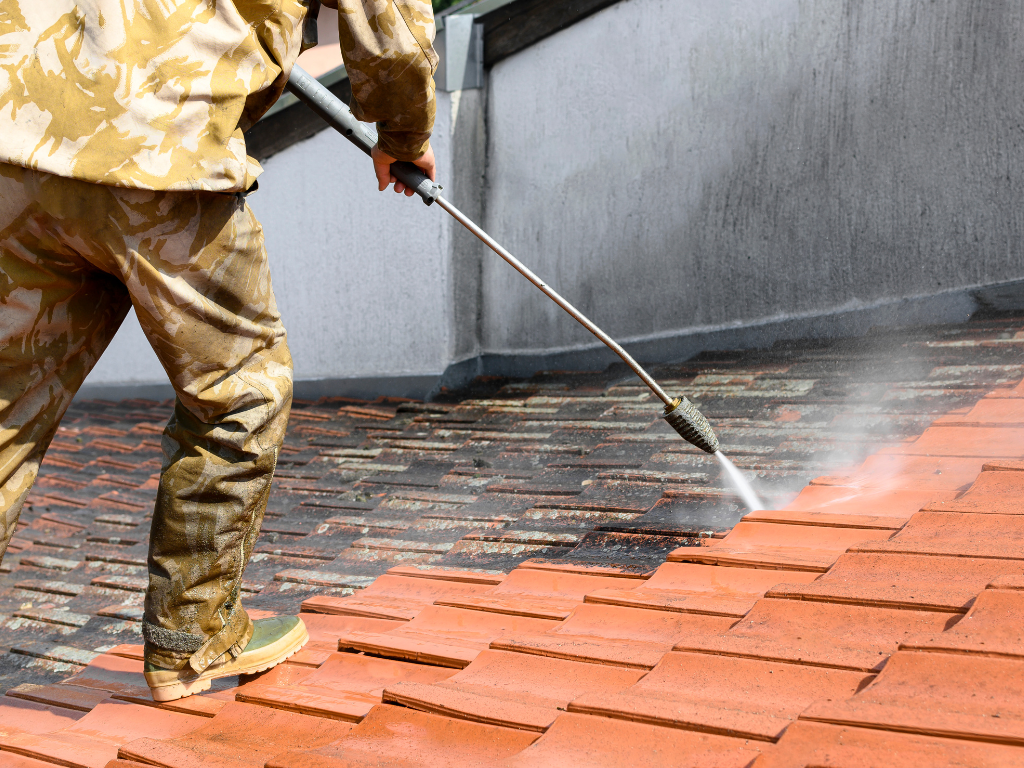
Exploring Material Options for Roof Tile Replacement
Several materials are available for roof tile replacement, each with unique benefits:
- Clay Tiles: Offer a traditional look and excellent durability.
- Concrete Tiles: Provide versatility in style and color, and are often more affordable.
- Slate Tiles: Known for their natural appearance and longevity.
- Metal Tiles: Offer durability and a modern look.
How to Choose the Right Materials Based on Durability, Cost, and Aesthetics
Selecting the right material involves balancing various factors:
- Durability: Consider the lifespan and weather resistance of the material.
- Cost: Factor in both the initial investment and long-term maintenance costs.
- Aesthetics: Choose a material that complements the architectural style of the building.
Professional Roofing Services: Repair and Replacement
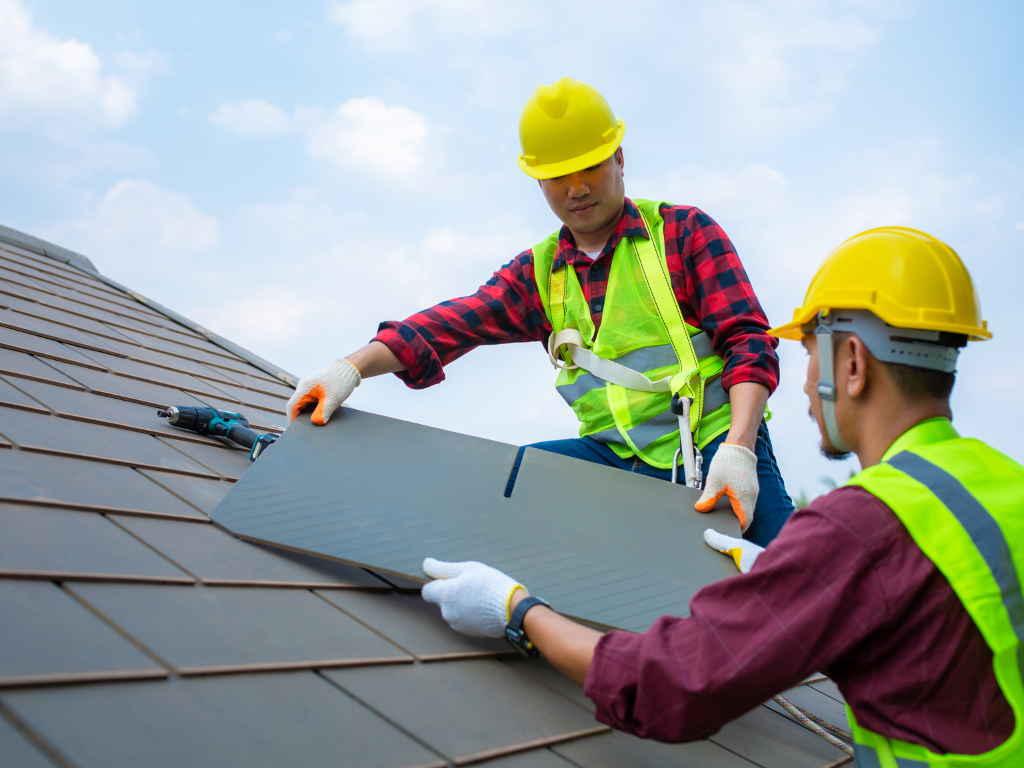
The Advantages of Hiring Professional Roofers
Professional roofers offer several advantages:
- Expertise: They bring experience and knowledge of the latest techniques and materials.
- Quality Assurance: Professional workmanship ensures long-lasting results.
- Safety: Professionals adhere to safety standards, reducing the risk of accidents.
Criteria for Selecting a Qualified Roofing Contractor
When selecting a roofing contractor, consider the following:
- Licensing and Insurance: Ensure they are licensed and insured for liability and worker’s compensation.
- Experience and Reputation: Look for a proven track record and positive customer reviews.
- Warranty and After-Service: Check if they offer a warranty on their work and ongoing maintenance services.
Post-Repair and Replacement Care
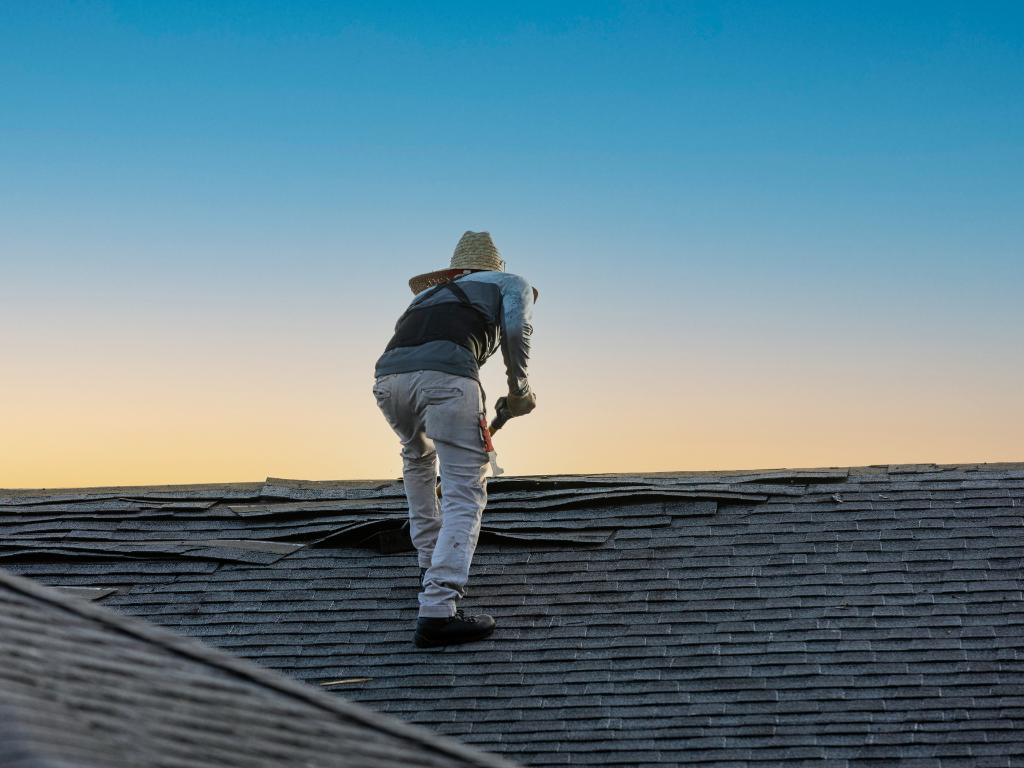
Essential Maintenance Tips After Roof Repairs or Replacement
After completing roof repairs or replacement, it’s crucial to maintain the roof to ensure its longevity. Some essential maintenance tips include:
- Regular Cleaning: Keep the roof clear of debris, leaves, and branches, which can accumulate and cause damage.
- Gutter Maintenance: Ensure gutters and downspouts are clean and unobstructed to prevent water buildup.
- Inspect Sealants: Regularly check and reapply sealants around vents and chimneys as needed.
Implementing Routine Checks to Prolong Roof Life
Routine checks are key to prolonging the life of your roof. These checks should include:
- Inspecting for Damage: Regularly inspect for cracked, broken, or missing tiles and address them promptly.
- Checking for Water Damage: Look for signs of water damage or leaks, especially after heavy rainfall or storms.
- Professional Inspections: Schedule annual inspections with a professional to identify potential issues early.
Roof Tile Maintenance for Longevity
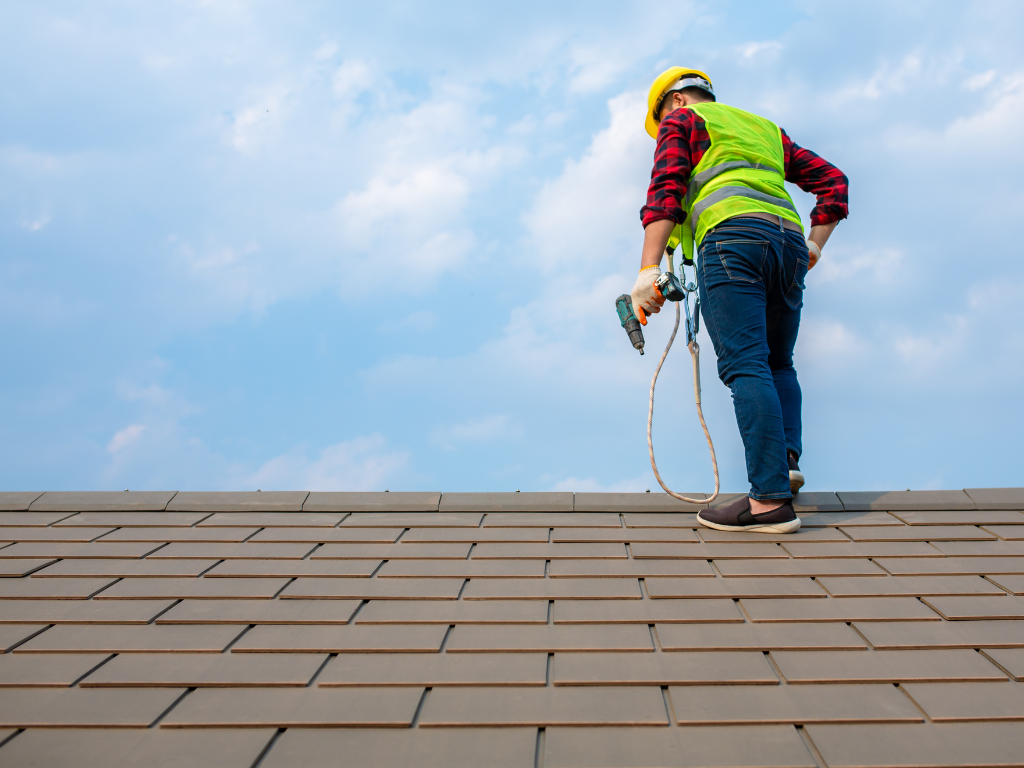
Regular Maintenance Strategies to Avoid Frequent Repairs
To avoid frequent repairs:
- Trim Overhanging Branches: Prevent damage from falling branches or leaves accumulating on the roof.
- Monitor for Moss and Algae Growth: These can deteriorate roof tiles over time, so treat them as soon as they appear.
- Ensure Proper Ventilation: Proper attic ventilation prevents moisture buildup that can damage the roof structure.
Preventive Measures to Enhance the Lifespan of Roof Tiles
Preventive measures include:
- Applying Protective Coatings: Consider applying protective coatings to tiles to increase their resistance to environmental factors.
- Regular Alignment Checks: Ensure that tiles are properly aligned to prevent water seepage.
- Addressing Minor Issues Promptly: Small issues can escalate into major problems if left unattended.
Conclusion
Effective maintenance of roof tiles is essential in preserving the integrity and safety of your roof. Regular inspections, prompt repairs, and understanding insurance and warranty aspects play critical roles in ensuring the longevity of your roof. By adhering to these practices, homeowners can ensure their roofs remain in optimal condition, protecting their homes and providing peace of mind.


